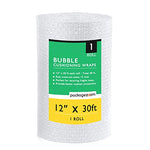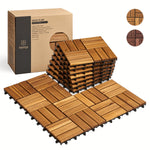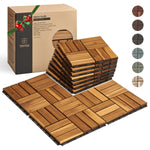You have no items in your shopping cart.
Welcome to this comprehensive guide on how to cut Plexiglass, a versatile and durable material commonly used in various DIY and professional projects. Whether you're a DIY enthusiast or a professional craftsman, knowing how to cut Plexiglass properly is crucial to achieve precise and clean cuts without causing damage or cracks.
In this guide, we will cover a wide range of methods and techniques to cut Plexiglass with ease, precision, and safety. We will also provide valuable insights and personal experiences to ensure you have all the information you need to tackle your cutting projects confidently.
How to Cut Plexiglass
Cutting Plexiglass requires careful attention and the right tools to avoid mistakes that may lead to cracks or breakage. Let's explore the step-by-step process of cutting Plexiglass and the different cutting methods available.
1. Measure and Mark the Plexiglass
Before you start cutting, accurately measure the dimensions you need and mark them on the Plexiglass. Use a fine-tip marker or a grease pencil for precise markings.
2. Prepare the Cutting Area
Ensure you have a stable and clutter-free work surface. Lay down a soft, non-abrasive material like a blanket or foam to protect the Plexiglass from scratches during cutting.
3. Safety First!
Always prioritize safety when cutting Plexiglass. Wear appropriate personal protective equipment (PPE) such as safety goggles and cut-resistant gloves to protect your eyes and hands from potential hazards.
4. Using a Circular Saw
A circular saw equipped with a fine-toothed blade is an efficient tool for cutting straight lines in Plexiglass. Secure the Plexiglass to the work surface, align the marked line with the saw's cutting path, and move the saw steadily through the material.
5. Scoring and Snapping
For straight cuts on thinner Plexiglass sheets, scoring and snapping is a popular method. Use a glass cutter or a utility knife to score the surface along the marked line, and then apply pressure to snap the Plexiglass along the scored line.
6. Jigsaw Method
When dealing with intricate shapes and curves, a jigsaw with a fine-toothed blade can be used. Secure the Plexiglass to the work surface, drill a starter hole for the jigsaw blade, and carefully follow the marked line.
7. Router Technique
A router with a straight bit is ideal for creating smooth and precise edges on Plexiglass. Secure the Plexiglass, set the depth of the router bit, and move the router along the marked edge.
8. Using a Laser Cutter
For high-precision and intricate designs, a laser cutter is a fantastic option. Ensure the laser settings are appropriate for Plexiglass, and let the machine do the cutting work.
9. Hot Wire Cutting
Hot wire cutting is suitable for making clean and accurate cuts in foam-core Plexiglass. Use a heated wire to slice through the material, following the marked lines.
10. Cutting with a Scroll Saw
A scroll saw equipped with a fine blade is another excellent option for detailed cuts in Plexiglass. Secure the material and carefully maneuver the scroll saw along the marked lines.
11. Tips for Preventing Chips and Cracks
To avoid chipping and cracking during cutting, consider the following tips:
- Use a sharp blade or cutter.
- Apply gentle pressure to the material.
- Avoid high cutting speeds, especially with power tools.
- Consider using a lubricant or cutting fluid.
12. Dealing with Thick Plexiglass
Cutting thick Plexiglass requires patience and the right tools. Opt for power tools like a table saw with a carbide-tipped blade for clean and precise cuts.
13. Polishing the Edges
After cutting, you may notice rough edges. Use sandpaper or a flame polisher to smooth and polish the edges for a professional finish.
14. Removing Protective Film
If your Plexiglass has a protective film, remove it after cutting. Gently peel off the film to reveal the clean, cut surface.
15. Proper Storage of Scraps
Don't discard the leftover Plexiglass scraps. Store them properly, as they might come in handy for future projects or repairs.
Safety Precautions for Cutting Plexiglass
Working with Plexiglass involves some inherent risks, so taking safety precautions is paramount to prevent accidents and injuries.
1. Ventilation
When cutting Plexiglass, ensure proper ventilation to avoid inhaling fumes that may be released during the cutting process.
2. Eye Protection
Wear safety goggles or a face shield to shield your eyes from flying debris and potential splinters.
3. Skin Protection
Plexiglass can have sharp edges, so wearing cut-resistant gloves will protect your hands while handling and cutting the material.
4. Hearing Protection
Power tools can generate noise, so wearing ear protection is advisable to safeguard your hearing.
5. Avoid High Temperatures
Plexiglass can melt when exposed to high temperatures, so avoid cutting it with tools that produce excessive heat.
6. Work Area Cleanliness
Keep your work area clean and free of debris to prevent accidents and ensure accurate cuts.
FAQs
Q: Can I use a regular glass cutter on Plexiglass?
A: While you can use a regular glass cutter on thinner Plexiglass sheets, it may not work effectively on thicker materials. Consider using a utility knife for thicker Plexiglass.
Q: How can I reduce chipping when cutting Plexiglass?
A: To reduce chipping, use a sharp blade, apply gentle pressure, and use a slow cutting speed. Additionally, you can place painter's tape along the cutting line to minimize chipping.
Q: Can I use a bandsaw to cut Plexiglass?
A: Yes, a bandsaw with a fine-toothed blade can be used to cut Plexiglass, especially for straight lines and thicker sheets.
Q: What is the difference between Plexiglass and acrylic?
A: Plexiglass is a brand name for acrylic, so there is no difference between the two. They are both transparent, durable, and commonly used in various applications.
Q: Is a laser cutter safe for cutting Plexiglass?
A: Yes, a laser cutter is safe for cutting Plexiglass, but ensure you follow the manufacturer's guidelines and safety precautions.
Q: How do I remove scratches from Plexiglass?
A: To remove minor scratches, use a buffing compound and a microfiber cloth. For deeper scratches, consider using a commercial scratch remover specifically designed for Plexiglass.
Congratulations! You've now mastered the art of cutting Plexiglass. Armed with the knowledge of various cutting methods, safety precautions, and expert tips, you can confidently take on cutting projects of all sizes and complexities.
Remember to always prioritize safety, wear the appropriate protective gear, and follow the manufacturer's instructions for the tools you use. With practice and care, you'll achieve precise and professional results in your Plexiglass cutting endeavors.








